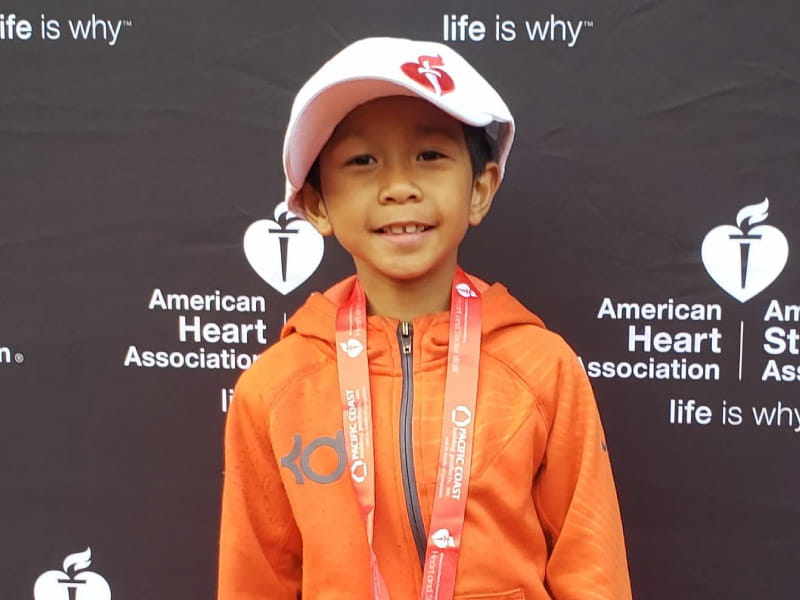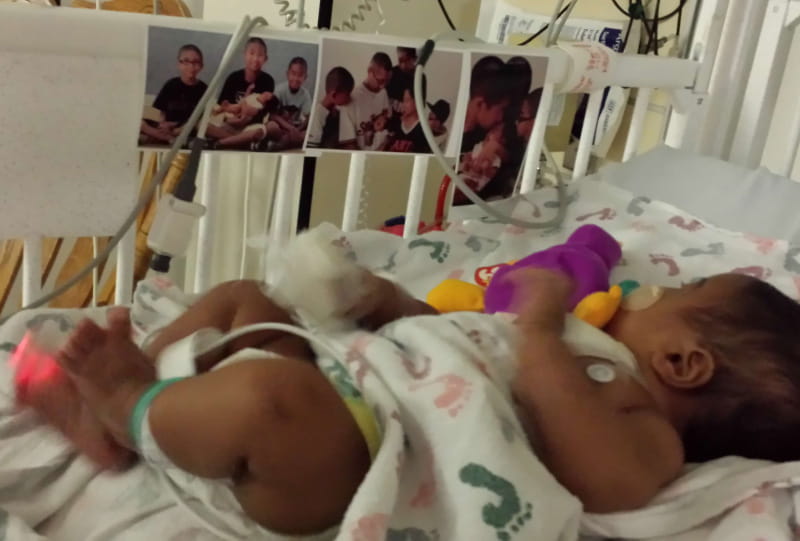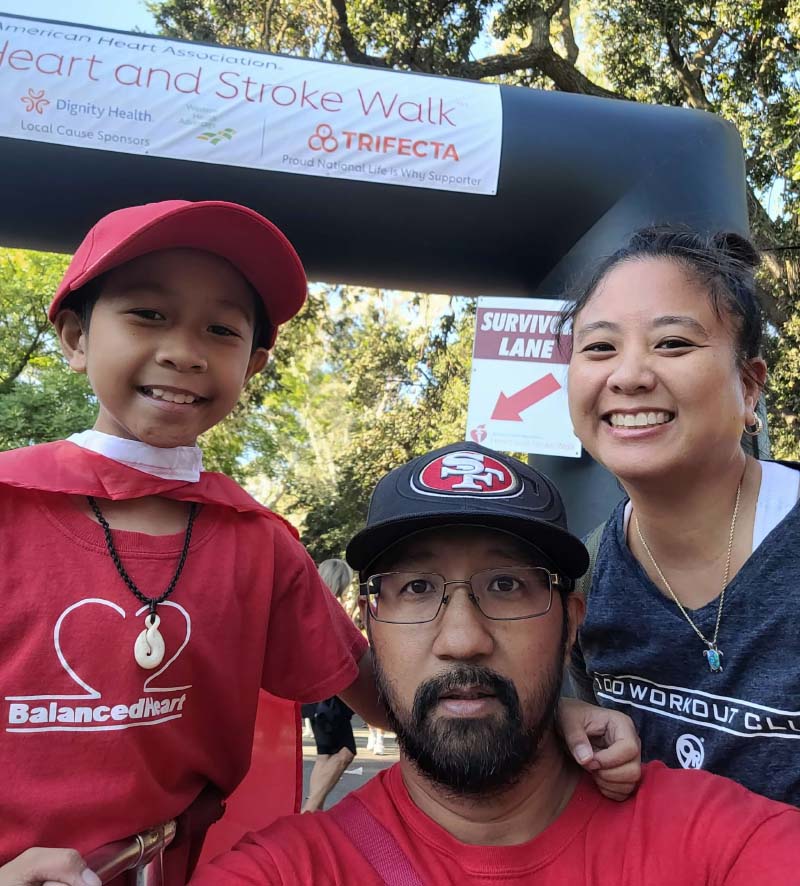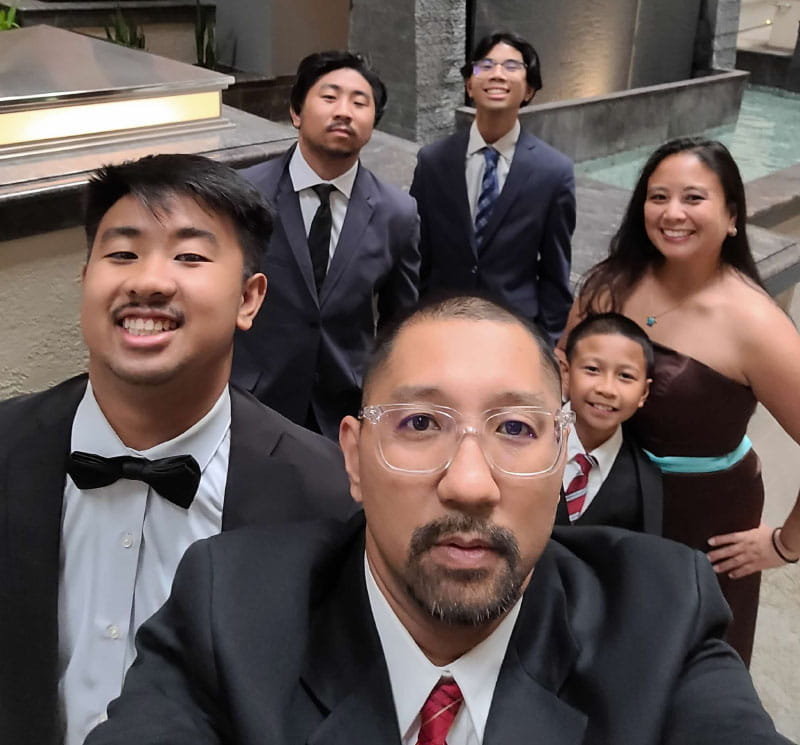Born with a rare heart defect, sixth grader wants to solve the world's problems
By Deborah Lynn Blumberg, American Heart Association News

Working parents Mia and Geody Domingo of Sacramento, California, were busy caring for three young sons, and they had a fourth on the way. After a smooth pregnancy, they welcomed Luke Domingo into the world on their 11th wedding anniversary.
In the delivery room, Mia took Luke in her arms. Her eyes widened as she gazed at her baby.
His skin was blue.
"We have to take him," her doctor said, directing the medical team to rush Luke to the neonatal intensive care unit.
While Luke was undergoing tests in the NICU, Mia shared a recovery room with another new mom and her baby. Each time her roommate's baby cried, Mia's heart sunk. She and Geody waited nervously for news.
Hours later, hospital staff moved Mia to a private room. Soon after, a new doctor knocked on her door. A pediatric cardiologist.
"Your son has a heart condition," he said, uncapping a marker and drawing a diagram on the room's dry-erase board. "Tetralogy of Fallot."
Mia had never heard the term. The doctor explained the rare, complex congenital heart defect. It meant Luke had a series of structural issues with his heart that changed how blood was flowing throughout his body.
People with the condition often have a hole between their lower heart chambers, which allows oxygen-rich blood to flow into the lungs instead of the rest of the body.
They also have a misplaced aorta, a thicker lower right heart chamber, and a narrowing of the pulmonary valve, which over time can strain the heart. Luke was also born with a heart murmur and other conditions that would ultimately require surgery.
The doctor took the Domingos to the NICU to see Luke. He was covered in wires. They had to be quiet to help keep his heart rate from accelerating.
It wasn't until Luke's sixth day that Mia and Geody got to hold him.
When they left the hospital a week later, they knew they'd soon be back. Luke would need two surgeries starting at 5 months old.
But first, he needed to get bigger and stronger.
At home, Luke's older brothers – Elijah, Kailan and Jeremie, then 10, 9 and 7 – doted over him. When surgery time arrived, Luke had met some milestones: He was rolling over and constantly babbling.
The first surgery would address his heart conditions.
The operation took five hours, longer than expected because of Luke's complicated anatomy. He stayed in the hospital for a week to recover. To comfort him, Mia and Geody taped pictures of Elijah, Kailan and Jeremie in his hospital crib.

Over the next few years, Luke started school, made friends and enjoyed playing with his brothers, especially with remote-controlled cars.
He couldn't join a sports team because doctors worried a hit to his chest could disrupt his heartbeat, possibly leading to a cardiac arrest.
Sometimes, he got frustrated watching his older brothers play football and basketball.
At school, teachers – and Luke himself – explained to classmates why they couldn't tackle him during recess or throw a ball at his chest. Luke tired faster than other kids, and he had to take frequent breaks.
His second surgery – to address his pulmonary artery – was supposed to happen at age 7. However, that was during the height of the COVID-19 pandemic. Luke's cardiologist instead monitored Luke closely. Once he was around 9, it was time.
The five-hour surgery reduced the leakage. But it was supposed to stop it entirely. Doctors decided to wait until he's in high school to address his remaining heart conditions.
Even if it wasn't a total success, the operation made a huge difference.
In the months that followed, Luke's shoe size shot up by three, and he needed clothes nearly two sizes larger. When playing, he felt less fatigued.
Now, Luke is a happy, curious 11-year-old intent on solving the world's problems.
"Luke is just an overall great kid," Mia said. "He's a really old soul."

He has said he wants to be a scientist so he can "figure out how to cure stuff." But Luke is also thinking about how to solve world hunger and cure diseases, and he loves math.
"I may not look like I have a bad heart, but I do," Luke said. "I also have a scar. Surgery was scary, but now I'm good." Luke says to other kids with heart problems, "just don't be scared, and trust the process."
The Domingos hope Luke's third surgery three years from now will be his last. But that's what doctors thought about surgery No. 2.
"At this time, it's a lot of 'I don't knows,'" Mia said.
In the meantime, Luke just started sixth grade. He's looking forward to new teachers, his last year of elementary school, and hanging out with his friends and meeting new ones.

Stories From the Heart chronicles the inspiring journeys of heart disease and stroke survivors, caregivers and advocates.





